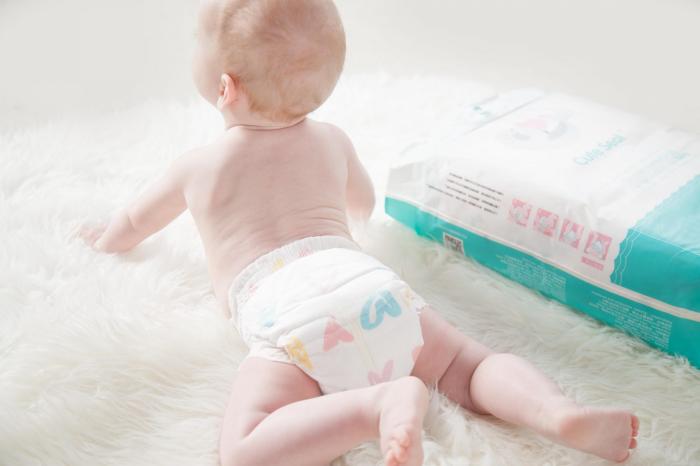Diaper rash is a common issue that many parents face. It occurs when a baby’s skin becomes irritated from prolonged contact with a wet or soiled diaper. This condition can cause discomfort and can be distressing for both the baby and the parents. Fortunately, there are several effective treatments and remedies to help soothe and heal diaper rash. This article will explore what you can use to treat diaper rash, focusing on safe and effective options.
Understanding Diaper Rash
Diaper rash is a form of dermatitis that affects the areas of the skin in contact with the diaper. It often appears as red, inflamed skin on the baby’s bottom, thighs, and genital area. The rash can range from mild redness to more severe irritation with sores or open areas.
a. Causes of Diaper Rash
Diaper rash can be caused by various factors, including prolonged exposure to wet or soiled diapers, friction from the diaper, and skin infections. It can also be triggered by introducing new foods or antibiotics.
b. Symptoms of Diaper Rash
Symptoms include redness, swelling, and discomfort in the diaper area. In severe cases, the rash may become blistered or ulcerated.
Treatments and Remedies for Diaper Rash
When treating diaper rash, the goal is to soothe the irritation, promote healing, and prevent further exposure to irritants. Here are some effective treatments and remedies:
a. Diaper Rash Creams and Ointments
Diaper rash creams and ointments are specifically formulated to create a barrier between the skin and the diaper. They help protect the skin from moisture and irritants. Look for products that contain:
Zinc Oxide: This is a common ingredient in diaper rash creams. It forms a protective barrier on the skin and helps to reduce inflammation.
Petroleum Jelly: This helps to lock in moisture and protect the skin from further irritation.
Lanolin: This natural emollient helps to soothe and moisturize the skin.
b. Natural Remedies
Natural remedies can also be effective in treating diaper rash. Some options include:
Coconut Oil: Known for its antimicrobial properties, coconut oil can help soothe and heal irritated skin. Apply a thin layer to the affected area.
Aloe Vera: Aloe vera gel has soothing properties and can help reduce inflammation. Use pure aloe vera gel to avoid any added chemicals.
Breast Milk: Some parents find that applying a small amount of breast milk to the rash helps with healing. Breast milk contains antibodies and soothing properties that can benefit the skin.
c. Changing Diapers Frequently
One of the most effective ways to prevent and treat diaper rash is to keep the diaper area clean and dry. Change diapers frequently, especially when they are wet or soiled. Ensure that the baby’s bottom is completely dry before putting on a new diaper.
d. Using Super Absorbent Diapers
Super absorbent diapers help to wick moisture away from the skin, reducing the risk of diaper rash. Look for diapers with good absorbency and breathable materials to keep the skin dry.
e. Allowing Diaper-Free Time
Giving your baby some time without a diaper can help the skin breathe and heal. Lay your baby on a clean towel or blanket and allow them to have diaper-free periods throughout the day.
When to Seek Medical Advice
In most cases, diaper rash can be managed with home treatments and good diaper hygiene. However, there are situations when it is important to seek medical advice:
a. Persistent or Severe Rash
If the diaper rash does not improve with over-the-counter treatments or if it seems severe, consult a healthcare provider. They can determine if a prescription medication or a different treatment is needed.
b. Signs of Infection
If the rash is accompanied by symptoms such as fever, pus, or spreading redness, it could be a sign of a bacterial or fungal infection. Medical treatment may be necessary in such cases.
c. Allergic Reactions
If you suspect that a new product is causing an allergic reaction, discontinue use and consult a pediatrician.
Preventing Diaper Rash
Prevention is key to minimizing the risk of diaper rash. Here are some preventive measures:
a. Choose the Right Diapers
Select diapers that are absorbent and made from breathable materials. Avoid diapers with added fragrances or dyes that could irritate the skin.
b. Maintain Good Hygiene
Keep the diaper area clean and dry. Use mild, fragrance-free wipes or water and a soft cloth to clean the area during diaper changes.
c. Apply Barrier Creams
Apply a barrier cream or ointment during every diaper change to help protect the skin from moisture and irritants.
d. Monitor Diet and Medications
Be aware of changes in your baby’s diet or any medications that might contribute to diaper rash. If you notice a correlation, consult your healthcare provider.
See also: Which Is the Best Diaper?
Conclusion
Diaper rash is a common issue, but with proper care and treatment, it can be effectively managed. Use mild, effective creams or ointments, consider natural remedies, and ensure good diaper hygiene to soothe and prevent diaper rash. If the rash persists or shows signs of infection, consult a healthcare provider for further guidance.
By following these guidelines and maintaining good diapering practices, you can help keep your baby’s skin healthy and comfortable.


